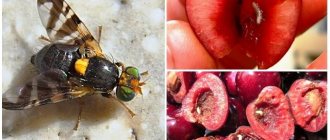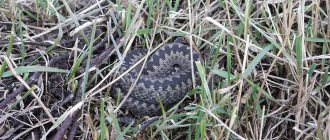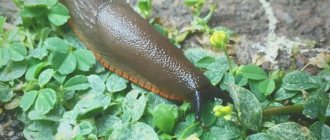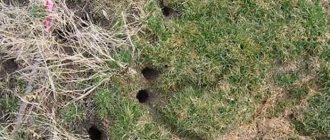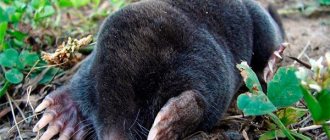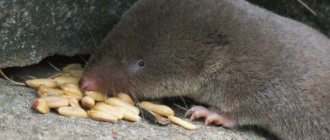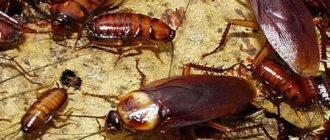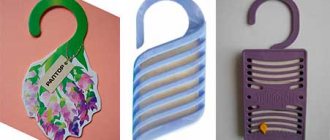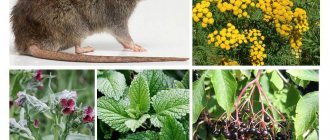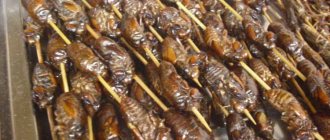| Pictured is a slug, slug |
Slug or slug is the common name for some gastropods, or, more simply, snails. Slugs differ from snails by the absence of a shell. Like snails, slugs are found primarily in damp places. Slugs can eat a wide variety of foods. Slugs also have a lot of enemies, and due to their weak defenses, slugs themselves often become food for various predators.
| Pictured is a slug |
Description of the slug. The slug's body has an elongated shape and can easily change its shape due to muscle contraction. Their slug bodies secrete a large amount of mucus. This secreted mucus helps improve the body's gliding when moving, which greatly facilitates the movement of the slug. Mucus also helps maintain moisture in the slug's body and prevents it from drying out. To some extent, the mucus also serves to scare away predators, since the slug has no other defense abilities, but has a lot of enemies. Slugs move slowly and are very vulnerable. There are tentacles on the slug's head, one or two pairs of which contain the slug's eyes and sensory organs. Slugs can live for several years.
About slugs. Slugs are a widespread pest of many crops, vegetables, fruits and berries. Some types of slugs can cause significant damage to crops, sometimes completely destroying the entire crop. Slug infestations can occur in rainy years. Slugs serve as reservoirs and carriers for many parasites and various worms. Slugs reproduce quickly; several generations of slugs can grow in a season.
Who eats slugs? Although slugs have many enemies, among them there are none that feed mainly on slugs. Many birds, jackdaws, crows, rooks, starlings, and some species of gulls feed on slugs. Slugs and poultry, chickens and ducks, are also eaten. Snakes, lizards, salamanders, toads and frogs like to hunt slugs. Some mammals, such as moles, shrews, hedgehogs and mouse-like rodents, also readily eat slugs. Some types of insects can also eat slugs.
Slugs as pests. Slugs live in a variety of places, including the ability to live comfortably in dachas and vegetable gardens. From such a neighborhood, summer residents may experience a significant reduction in harvest. Slugs love almost everything: fruits, vegetables, berries, salads. Not only do slugs destroy crops, but they also spread many infections, all kinds of parasites, and spread fungal and viral diseases. All these diseases have a detrimental effect on the health of plants, animals and people. All this taken together can reduce all the efforts of the summer resident to zero. Therefore, slugs need to be dealt with, preventing them from reproducing. And slugs reproduce very quickly, especially in rainy and humid weather.
| How to deal with slugs? |
Measures to combat slugs. How to deal with slugs? Slugs love moisture and damp places, but slugs do not like heat. If possible, you should regularly drain places where water and moisture accumulate on the site. It is necessary to collect slugs in a timely and regular manner, preventing them from breeding and multiplying, and slugs reproduce very quickly. In order to collect more slugs on the site as simply and quickly as possible, you can make special artificial baits and slug traps for this on the site. To create such baits, you need to lay out the rinds of watermelons, melons, pumpkins on the garden bed, or you can simply use pieces of cellophane or jars of liquid in which slugs will collect. Early in the morning you will need to assemble these slug traps and destroy any slugs caught in them. Poultry, chickens and ducks can eat slugs, but you probably shouldn't feed them slugs, because slugs are the source and carriers of various diseases. To catch slugs, you can make shelters in the area from small boards, cellophane, or pieces of roofing felt. Under these shelters, slugs will regularly gather to safely wait out the heat of the day, which slugs cannot tolerate. Slug control should be carried out regularly.
Below on the website you can view and download large and beautiful photos of slugs.
Photos of slugs and slugs:
Slugs are gastropods. They live on land. These animals do not have a shell. But, despite the lack of protection, slugs cause a lot of damage in the garden. Therefore, it is simply necessary to fight them.
General information about the mollusk
The mollusk has an elongated, elongated body that can change its shape due to muscle contractions. Its body consists of three sections: head, legs and visceral mass. The legs and torso are separated by a circular groove. The head has tentacles on which the sensory organs are located. Behind the head there is a mantle with a pulmonary opening leading to the mantle cavity, which, in fact, performs the function of the lung.
They are always covered with mucus. This is a protective reaction against drying out. Coloring can be varied. They are found in gray, brown, yellow and even black. May be spotted. Some types of slugs are bred in aquariums and are considered pets.
Agrotechnical method of control
The mechanical method involves collecting slugs by hand or preparing traps for catching.
If you collect slugs by hand, use tweezers.
Use your knowledge of what slugs like and don't like. Prepare traps:
- They love the smell of beer and fruit. Place canvas, burlap, or cabbage leaves between the beds, pre-soaked in beer or fruit juice. During the day, slugs will fall into traps, and by evening you will simply gather “invited guests.”
- They don't like salt and soap. Dig small depressions between the rows of plants and place not very deep containers, which you fill with a strong solution of salt or soap. Cover the top with burlap or a rag. Slugs getting into the solution prepared in this way die.
- They do not like dry porous material. Scatter crushed eggshells, broken shells, or pea gravel around the plants. The rough surface is not very pleasant for slugs; they cannot reach the plants.
Phyto-method - using the smells of herbs:
- Parsley
- Bay leaf
- Santolin
- Rosemary
- Sage
- Thyme
- Lavender
The biological characteristics of slugs and their way of life are such that for normal existence they need damp, shady places where they can hide at any time. To repel pests, it is necessary to thin out and remove weeds in areas with crops.
In addition, it is necessary to remove boards, branches or stones from the areas, which provide an ideal hiding place for slugs. If they are widespread in the garden or garden, you need to remove the garden composter, which is an ideal place for pests to live and lay eggs.
We invite you to read: Black scab of potatoes - effective methods of control
A simple and safe method of getting rid of slugs is the use of traps. The basis of these simple devices are juices, beer and dairy products - the favorite delicacies of these pests. A deep container, such as a glass, must be immersed in a pre-dug hole so that its edges are flush with the ground. The container should be filled with beer, juice or milk.
It is better to set the trap in the evening and check its contents in the morning: slugs will be attracted by the smell of the bait, but when they get into a container with liquid, they will drown. Many people use citrus fruits as bait for pests.
You can, for example, remove the pulp from a grapefruit and leave “domes” of two halves in the area with the plants being grown in the evening. The next day all that remains is to destroy the slugs that have gathered near them.
Varieties of slugs
Slugs prefer damp places. If the soil is dry, they die or become buried in the ground. Very often they can be found in the forest or in the garden. An excellent place for them is thickets of bushes. They can also live in the far corners of parks, where there is a body of water nearby. They feed on leaves, mushrooms, berries and flowers. Some species feed on worms. They cannot live in hot places. These mollusks are not found in deserts.
There are many types of slugs. Many of them are pests. The most common are:
large roadside;- black;
- banana;
- nautical;
- malakolimax gentle;
- giant blue;
- reticulate;
- field;
- smooth.
In nature, there are several hundred species of this mollusk.
We drive out uninvited guests with dry soil on the site
If you think logically, slugs that prefer high humidity will be less fond of dry soil. These conclusions were made by summer residents decades ago, when they began to dry the soil in order to drive slippery guests out of the territory.
Many simply sprinkle the top layer with dry soil, thereby protecting the soil after watering; some simply regulate watering more efficiently, for example, by arranging drip irrigation, which we also recommend reading about at the link. But there are also solutions to arrange good drainage under the beds. This may be relevant and even effective, but it is labor-intensive and expensive.
Characteristics of representatives
Large roadside is the most common species in the garden. It is large in size. Sometimes it is called leopard print. Its color is gray-spotted.
The blue slug is often called the Carpathian slug. This is due to the fact that it is found only in the region of these mountains. It is large in size and brightly colored. Prefers coniferous and deciduous forests of Ukraine, Poland, Slovakia and the Czech Republic. Its diet includes russula, which is what gives the giant blue slug its amazing color. The accumulation of this species will be a tip to the mushroom picker. This means that there is a mushroom clearing nearby somewhere.
The naked slug is the most famous species in Russia. This annoying pest not only lives in the garden, but also loves greenhouses and greenhouses. Leaves large holes on fruits and leaves.
The black type of mollusk is the largest. Some individuals are up to 30 centimeters long. Mushrooms are what slugs of this species eat. He also loves root vegetables.
Another large representative is the banana slug. It is not found in banana plantations and will not look like a banana, but is a bright yellow color. It feeds on lichen, mushrooms and rotten leaves.
Small species include the field slug. Its dimensions do not exceed 5−6 centimeters. It lives in valleys and on the edges of forests. Young shoots and wild berries make up its diet. Comes in all shades of brown.
In moss thickets you can find whole groups of reticulated slugs. This species loves loose soil and rotten leaves. He is one of the smallest representatives. Its dimensions do not exceed 3 centimeters. Very often has a spotted color.
Preparations to get rid of pests
Many younger summer residents, who do not want to waste time setting up traps or reading information about effective methods against garden pests, do it simpler - they buy slug repellents in stores.
This is, of course, possible, and it is quite likely that this is one of the most effective ways to influence the pest, but you need to be absolutely sure that the product will work and at the same time will not harm the soil and the crops grown in the garden. Therefore, you should carefully study the drug you have chosen, read about its contents, instructions for use, assess the possible damage to the land and plants, and only then use it.
At the moment, there are many known poisons against slugs, some of them are even complex, and they work against several pests at the same time, but we would not recommend buying everything. We will draw your attention only to drugs that we ourselves know something about. These are Ferramol, Groza, Meta, Bros Snakol, Schneken Linsen (Etisso), Slug Eater.
Enemies of shellfish
They have quite a lot of enemies. The sun is their main enemy, as they cannot tolerate high temperatures and die. They are loved by predators, such as wild boars. Some vertebrates feed on them. They are food for shrews, hedgehogs and moles. Rodents won't refuse them either.
Snakes, frogs and lizards often feast on slugs. There are a lot of their enemies among birds. Rooks, starlings, storks, gulls, jackdaws and many other birds prefer to feed on them. Among domestic animals, ducks and chickens should be noted, which do not refuse slugs.
Insects are also a threat to shellfish. They are part of the regular diet for ground beetles. Grasshoppers also feed on them. There are many who eat slugs in nature.
How to deal with slugs?
The fight against these uninvited guests involves the use of chemicals or traditional methods. You can try to collect them manually. But with a large concentration of slugs, this method is difficult.
Natural enemies
In nature, quite a few animals feed on mollusks. These are mainly birds: starlings, blackbirds, magpies, crows, and also rooks. You can attract winged helpers by building birdhouses on your property.
Shrews, hedgehogs, moles, and frogs also eat slugs. Attracting natural enemies is a good control measure in the absence of a large pest infestation.
Diet and harm to the garden
Most varieties of this mollusk cause enormous harm not only to gardeners and gardeners, but also to the entire agriculture industry in general. They feed on more than 150 types of vegetables and fruits; they love not only root vegetables, but also foliage and shoots of plants. They give preference to potatoes, beans, cucumbers, strawberries, tomatoes and many other vegetables, fruits and berries. But they avoid garlic, onions, mustard and basil.
Very often, entire grape and citrus plantations are under threat of destruction from this pest. Rye and winter wheat are often affected by slugs. They feed not only on grains, but also on seedlings. They avoid buckwheat, flax and spring wheat.
This is a real disaster for gardeners, as they spread incredibly quickly in the garden. And all because:
- lay dozens of eggs;
- develop rapidly to reproduce;
- are hermaphrodites and do not need a partner.
Slugs are a source of viral, bacterial and fungal diseases. For this reason, the entire crop often perishes. Crawling from one place to another, they spread the infection everywhere. They spread diseases such as:
- cabbage spot;
- potato late blight;
- downy mildew of beans.
These diseases will be destructive to the crop. They will not leave aside the ornamental plants on the site. These voracious mollusks eat everything from seeds to roots and leaves. They are most active at night. They like to appear after the rain. Slugs are carriers of parasites. Pets are at risk of becoming infected with different types of helminths.
There can be many reasons for the mass spread of a pest:
- not very cold winter;
- rainy summer;
- wet but warm autumn;
- early spring.
It's difficult to fight them. It is better to take preventative measures. If slugs appear, you must get rid of them immediately, otherwise the harvest cannot be saved.
Frogs and hedgehogs vs. slugs
Few people like frogs, but we have not heard of a person who would not be touched by hedgehogs. And so, if no one will breed toads to fight slugs, then it is certainly possible to populate the area with several hedgehogs. You just have to remember that in this case you shouldn’t feed hedgehogs, as children often do, otherwise fighting slugs with this method will quickly lose its effectiveness.
Such living creatures in the country are an active enemy of pests, and therefore you should not be afraid of hedgehogs, frogs or birds if they live in the garden. On the contrary, try to disturb them as little as possible so that, feeling the natural environment, they eat as usual and, accordingly, help you in the war with the enemy!
Pest Control
Experienced gardeners know many tricks on how to deal with slugs. However, this is a labor-intensive task and requires a lot of effort and patience. You should weed your area as often as possible. Pests don't like this. You should not leave garbage in your garden or garden. You can sprinkle the border of your property with coffee grounds or pine needles. This will be an obstacle for mollusks. Some gardeners use chlorine for this purpose. It is recommended to get rid of weeds.
Pest traps are popular. This could be mowed grass, damp moss, old wet rags, or even a can of beer, the smell of which will attract a slug. Such traps should be set at night, and pests should be collected in the morning. An infusion of pepper that is sprayed on the area will be effective in combating them.
If the number of parasites is large, then drastic measures will have to be taken. It is better to use chemicals. But this can be done before the harvest ripens. If it’s already time to pick vegetables and berries, then harmless methods of spraying plants will do. Mustard solution will prove to be an effective remedy in the fight against the voracious mollusk. Many gardeners use a cheap saline solution.
They are not afraid of the first frosts and burrow into the soil. From early spring they begin their harmful activities. Until late autumn, slugs feed on the harvest of gardeners.
Fertilizers for cabbage from slugs
There are no direct fertilizers that are designed to combat slugs, but there are substances that pests cannot tolerate. As an example, we can cite mineral fertilizers, and the same calcium, which our enemies do not like. Often, such fertilizers are needed by the soil where crops are grown, but simply sprinkling them on the surface of the bed is not recommended, since oversaturation of the soil with certain substances can be worse than poor soil!
You can safely use this method of combating mollusks, especially if the plants need feeding during this period. But be sure to read our article on fertilizer rationing, and also pay attention to plant farming techniques to do everything correctly.
Structure
These mollusks lack shells and have a naked body. In the front part of the body they have a head, which is connected to the back by a short neck. There is an oval thickening on the back, this is a mantle that covers the respiratory organ - the lung, anus and genitals. Slugs are characterized by bilateral symmetry, broken by an unpaired pulmonary opening, always located on the right. There are two pairs of tentacles on the head, directed forward, where the sensory organs are located. A pair of longer tentacles at the ends have well-developed eyes. In the oral cavity there is a radula - a disc-shaped tongue equipped with many small teeth, with the help of which they absorb food, tearing off soft particles layer by layer with a grater, and become saturated. In a calm state, the individual is a small elongated lump, which greatly stretches when moving. The mollusk secretes a lot of mucus (where the name comes from), which primarily serves as protection against drying out and also helps with gliding, reducing friction when moving. These mollusks move due to wave-like contractile movements of the sole. The animal always leaves behind a silvery trail of mucus.
Most slugs have a body length of several centimeters, but large types of these mollusks (large roadside, banana, blue-black) can measure 15-30 cm. Basically, slugs have a nondescript brown color. But there are animals that have bright colors, for example, the forest slug is anthracite-black, the long banana slug is rich yellow, and the red roadside slug is brown or orange-red. These mollusks have a very slow movement speed, but they can make relatively long migrations, mainly in search of food.
Slugs can be found everywhere, but they reach their greatest distribution in areas with a temperate climate with high humidity - the forests of North America, Western and Central Europe, wet thickets of trees and shrubs in Australia and New Zealand. They live in forests, fields, gardens, and meadows. The pattern of settlement in warm and humid areas is due to the absence of a shell, which should have sheltered the animals from heat, cold and drought. During the day, slugs hide from direct sunlight in leaves and grass, becoming more active at night and early in the morning. They overwinter by burrowing deep into the ground. They also lay eggs in the soil.
Among slugs there are individuals with all types of nutrition. The main part of these mollusks are herbivorous; they feed on leaves, flowers, fruits and above-ground parts of root crops. Some species eat mushrooms, the remains of dead living organisms (fallen leaves, carrion), as well as moss, lichens, and feces. There are also omnivorous and predatory species of slugs that prey on earthworms, their smaller “brothers.”
